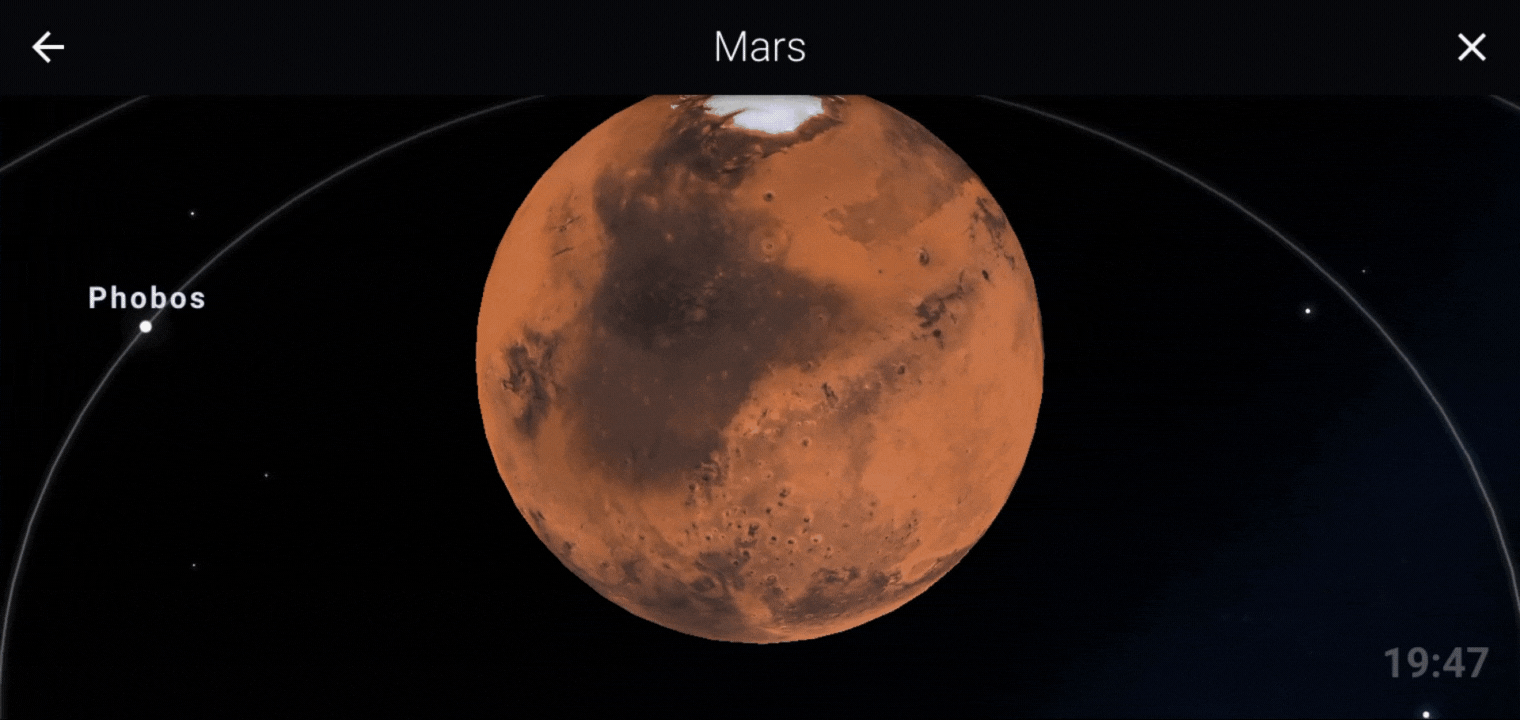Stellarium Mobile PLUS now features a 3D view of planets, moons, and even satellites! To access this feature, update to the latest version of Stellarium Mobile PLUS in Google Play Store or the Apple App Store. After that, you can now search for the object you want to view. Then, swipe up from the bottom of the screen and if 3D view is available for that object, you would be able to find the 3D button!
And what better way to introduce this feature than to conduct a 3D Tour of the Solar System! Are you ready?
Sun
Our Sun is the center of the Solar System. It is also the star closest to Earth. With a distance of 1 Astronomical Unit, or almost 150 million kilometers away from us, it is our main source of energy. The Sun is where all planets in the Solar system orbits.
In its surface, you will see dark spots. These are called sunspots and these are spots that are generally cooler compared to the other parts of the Sun.

Mercury
Mercury is the closest planet to the Sun. Surprisingly, it is not the hottest planet in the Solar System. It’s surface is composed of small and large craters. Mercury has no natural satellites or moons.

Venus
Venus is the second nearest planet to the Sun and the hottest planet on our Solar System. It’s thick atmosphere is composed of greenhouse gases traps heat in the planet making it the hottest planet in the Solar System. Like Mercury, Venus has no natural satellites.

Moon
Before we venture on other planets, let’s have a look on our very own natural satellite, the Moon. Our Moon goes by many names, Selene, Luna, and many more. It’s surface is composed of mares and craters, and one of the most popular crater of our moon is the Tycho crater.

Mars
Mars is also called the Red Planet, due to its reddish color. This color comes from iron oxide that is present in its surface. Just like Earth, Mars has polar ice caps, which is why scientists believe that at some point in the past, Mars had liquid water.
Mars has two natural satellites, Phobos and Deimos. but unlike our Moon, they are irregularly shaped

Jupiter
Jupiter is the largest planet in our solar system. It is considered to be a Gas Giant with its atmosphere consisting mainly of Hydrogen and Helium. It has more than 60 moons. Among these were the Galilean moons, Io, Ganymede, Europa, and Callisto, which was first discovered by Galileo Galilei.

Saturn
Saturn is a planet that is most famous for its rings. Its rings are mostly compost of ice and dust that were accumulated because of Saturn’s moons. Like Jupiter, Saturn is a Gas Giant and has a lot of moons. Most famous moons of Saturn include Enceladus, Titan, and Rhea.

Uranus
Uranus is the seventh planet in our Solar System. Many people doesn’t notice it but like Saturn, Uranus has icy rings. Another cool fact about Uranus is that it rotates on its side, which is responsible for weird season patterns in the planet.

Neptune
The most distant planet in our Solar System is Neptune. Neptune is an Ice Giant, mainly composed of water, methane and ammonia. Neptune’s atmosphere has visible and active weather patterns, with the Great Dark Spot being the most famous.

Have you tried the 3D view feature? What other features do you wish to see in the future? Let us know!

Available on Google Play and the iOS App Store
Follow us on twitter for the latest astronomical news and updates to Stellarium!
Follow @StellariumLabs
If you encounter any issues or bugs, feel free to email us at
[email protected]
and we will provide you with the best assistance.
Sources:
App Store®
Google Play and the Google Play logo are trademarks of Google LLC.

